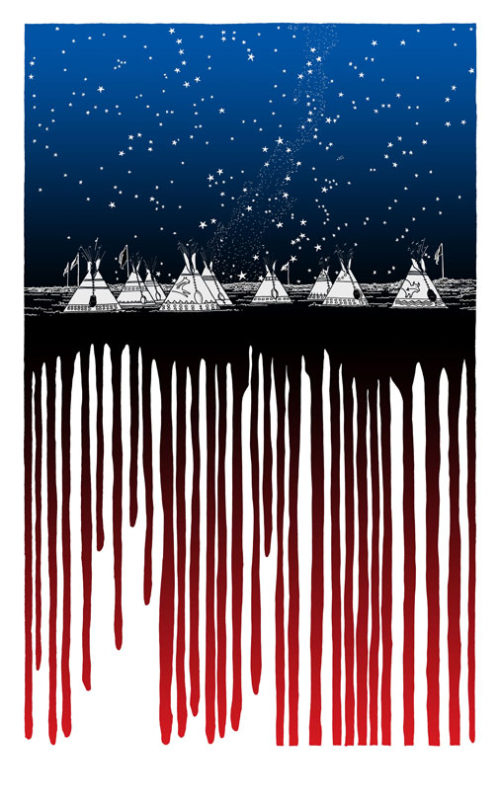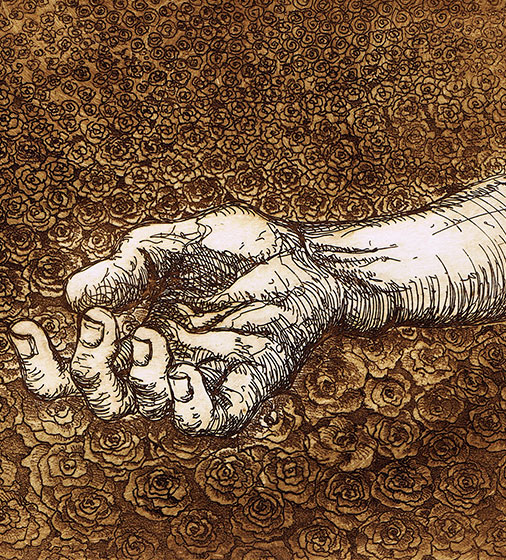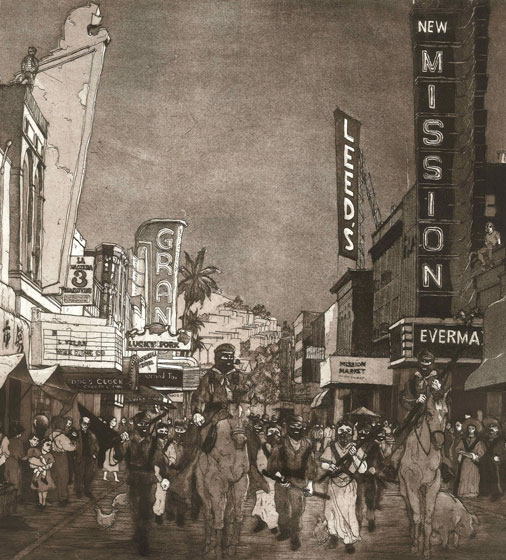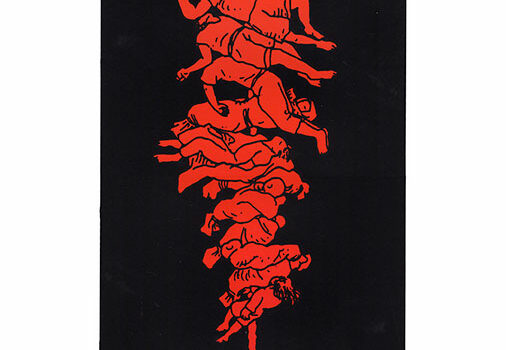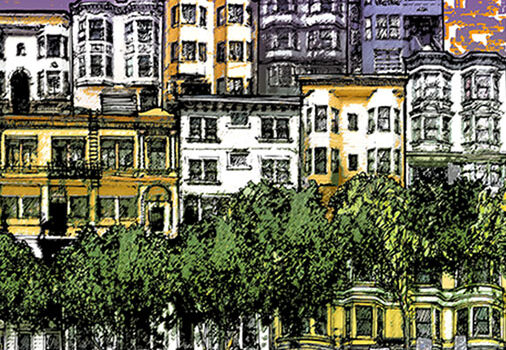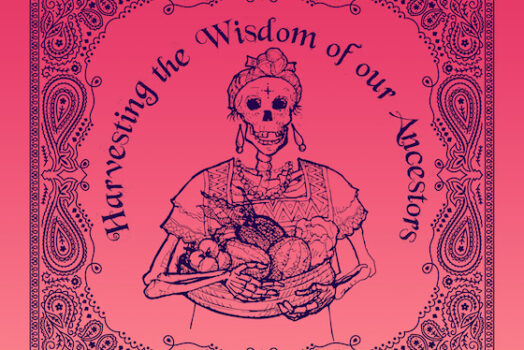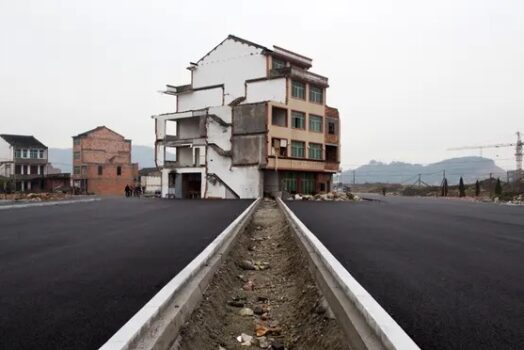I originally created this as an ink and watercolor drawing for The Othering & Belonging Conference at the Haas Institute for a Fair and Inclusive Society at UC Berkeley last year. I was asked to create something on the theme of "the Commons." Here in San Francisco where I live and work, I am constantly aware of development and the modern city being built on stolen land, the rising new skyscrapers downtown that are built over an erasure of history. I was much inspired by Michael Harney's illustrations in Malcolm Margolin's The Ohlone Way.
A friend pointed out that a permanent village site like this would probably not be located in the Mission Bay marshlands, but perhaps a fishing camp might, so I'll admit some artistic license. What is known, though, is that when the Spanish arrived, the Bay teemed with life, human, animal and plant, that awed the Europeans, and the skies darkened with migrating birds overhead (including a California condor!). If I were to revisit this theme, though, I think I would re-imagine the village as a contemporary Ohlone Big Time gathering and powwow, or an emerging Sogorea Te' land trust (more below), juxtaposed against the the ever-growing SF skyline.
The colors were done with a split fount, meaning some colors fade into others, and each print varies. In some of the prints, the sky seems to darken with smoke, and I realized the perspective is looking to the north from Mission Bay, across the downtown skyline toward last year's devastating North Bay fires. Today, with the introduction of non-native plants and an abundance of fuel (wood-framed houses), much of the California landscape is a tinder box waiting for the right spark (or unmaintained PG&E power and gas lines) to explode, but traditionally , indigenous peoples stewarded the land with controlled burns to bring forth new life in the spring.
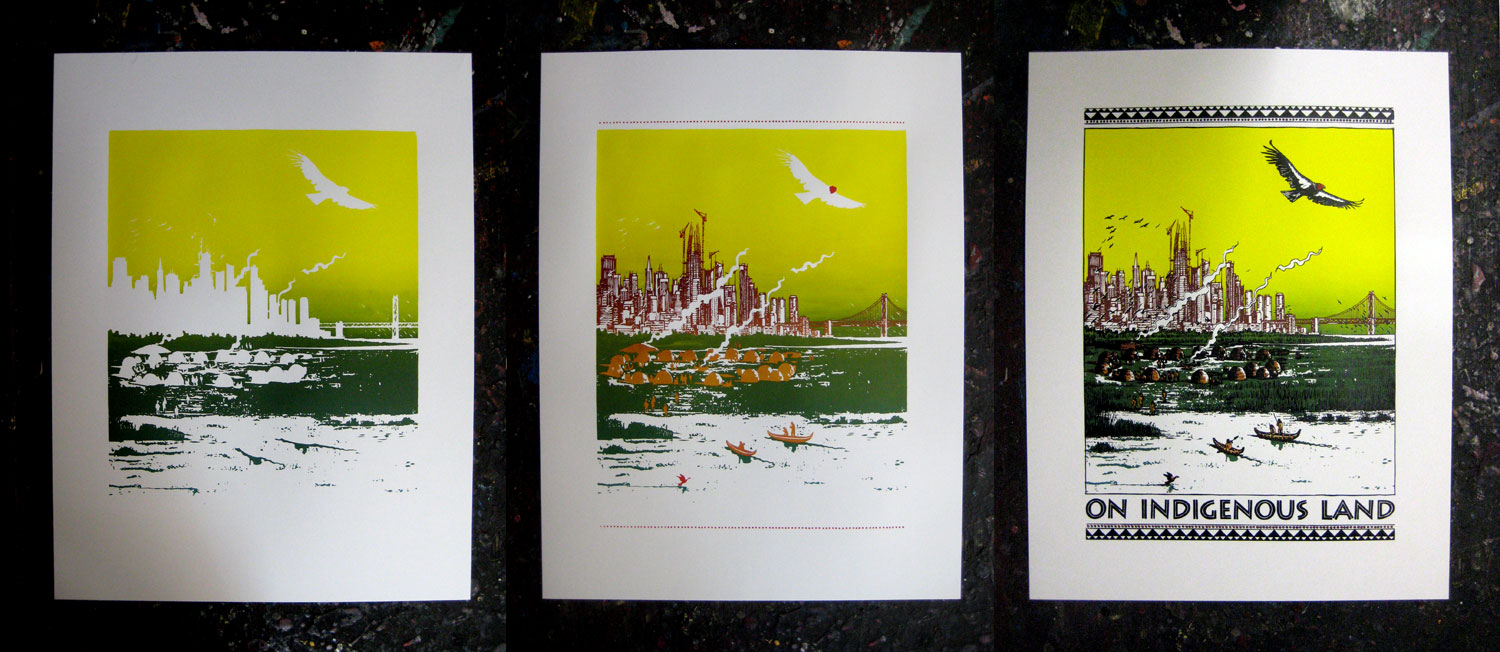
The artist’s proceeds from sales of this print will be donated to the Sogorea Te’ Land Trust. The following is adapted from the Sogorea Te’ web site:
The Sogorea Te' Land Trust is an urban Indigenous women-led community organization that facilitates the return of Chochenyo and Karkin Ohlone lands in the San Francisco Bay Area to Indigenous stewardship. Guided by the belief that land is the foundation that can bring us together, Sogorea Te' calls on us all to heal from the legacies of colonialism and genocide, to remember different ways of living, and to do the work that our ancestors and future generations are calling us to do.
Much of the East Bay is traditional Chochenyo and Karkin Ohlone land. Today, the Ohlone community in the East Bay has no land base. They are not federally recognized and have been politically and economically marginalized. Thousands of their ancestors’ bones are locked away in museum basement boxes at U.C. Berkeley and San Francisco Sate University. If you live on Chochenyo and Karkin Ohlone land, you are inadvertently benefitting from the genocide waged against the Ohlone people and the theft of their land. Whether you know it or not, however you feel about it, this is an inescapable fact. The civic infrastructure, the economic system, the private development and the consumption of natural resources in our society are all connected to and in different ways built upon the colonial occupation of this land and the violent displacement of the Ohlone.
Today the Sogorea Te' Land Trust is working to acquire and preserve land, establish a cemetery to reinter stolen Ohlone ancestral remains and build a community center and round house so current and future generations of Indigenous people can thrive in the Bay Area. Non-Indigenous people who live in traditional Chochenyo and Karkin Ohlone territory are asked to make a voluntary annual financial contribution to this critical community work, the Shuumi Land Tax, as a small way to acknowledge this legacy and contribute to its healing, repairing our broken relationships with each other and the land we live on.
Learn more about the Sogorea Te’ Land Trust and the Shuumi Land Tax here.


